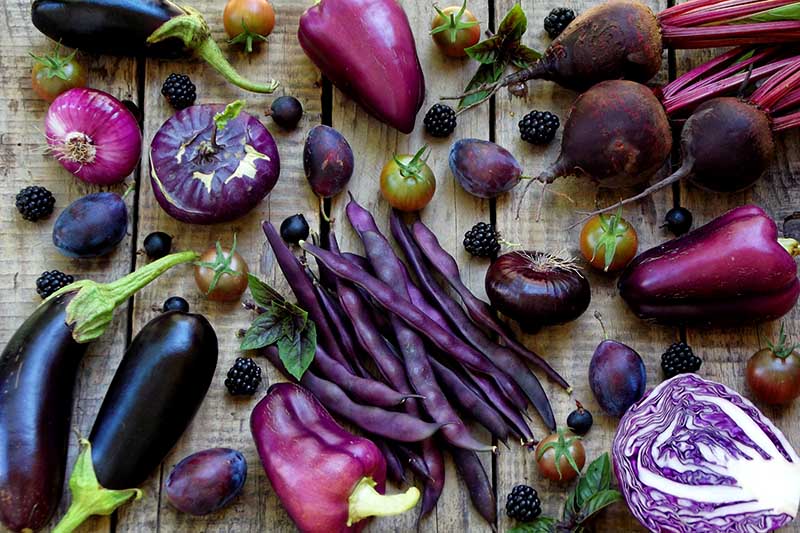Introduction:
Diabetes management typically involves medication, lifestyle changes, and dietary modifications, recent research has unveiled a potential ally in the fight against this disease: purple vegetables and tubers. These vibrant, natural wonders offer a spectrum of anti-diabetic properties that can significantly contribute to diabetes prevention and management. In this comprehensive article, we will explore the world of purple vegetables and tubers, their remarkable health benefits, and how they can be integrated into a diabetes-friendly diet.
Read Guide about Wegovy Dosage Guide: The Best Way For Weight Loss
Purple Vegetables and Tubers: A Colorful Solution
The vibrant hues of purple vegetables and tubers, such as purple sweet potatoes, purple carrots, eggplants, and purple cabbage, are a result of natural plant pigments called anthocyanins. These compounds are not only responsible for the striking colors but also pack a powerful punch of health benefits. Here’s how purple vegetables and tubers can play a crucial role in diabetes management:
1. Blood Sugar Regulation:
Anthocyanins found in purple vegetables and tubers have been shown to improve insulin sensitivity and enhance glucose metabolism. These compounds assist in regulating blood sugar levels, making them beneficial for individuals with both type 1 and type 2 diabetes.
2. Antioxidant Properties:
Purple vegetables and tubers are rich in antioxidants, which combat oxidative stress and inflammation—two factors that play a significant role in diabetes progression and complications. By reducing oxidative stress, these foods can help protect the pancreas and insulin-producing cells from damage.
Tip: Please fill out this form to determine whether or not you or a friend are eligible for a CGM
3. Improved Insulin Secretion:
Research indicates that anthocyanins may stimulate insulin secretion from pancreatic beta cells. This enhanced insulin production can aid in glucose uptake by cells, effectively lowering blood sugar levels.
4. Enhanced Weight Management:
In order to effectively treat diabetes, it is essential to keep a healthy weight. Purple vegetables and tubers are typically low in calories and high in fiber, promoting a feeling of fullness and aiding in weight control—a critical aspect of type 2 diabetes management.
5. Cardiovascular Health:
People who have diabetes have a significantly elevated threat of developing cardiovascular problems.
The anthocyanins in purple vegetables and tubers contribute to heart health by reducing blood pressure, improving lipid profiles, and preventing the development of atherosclerosis.
6. Anti-Inflammatory Effects:
Chronic inflammation is closely linked to insulin resistance and type 2 diabetes. The anti-inflammatory properties of anthocyanins can help alleviate inflammation and improve overall metabolic health.
7. Antioxidant Protection for Eyes:
One of the most common diabetic complications, diabetic retinopathy, can cause a person to lose their vision. Purple vegetables’ antioxidants may provide protection against retinal damage and preserve eye health.
Embracing Purple Vegetables and Tubers
Incorporating purple vegetables and tubers into your diet can be a delicious and nutritious way to support diabetes management. Here are some examples of these colorful additions and ways to enjoy them:
1. Purple Sweet Potatoes:
Purple sweet potatoes are a fantastic source of anthocyanins and fiber. Roast them, bake them into fries, or mash them as a tasty side dish. They can also be used in soups and stews to add a unique flavor and color.
2. Purple Carrots:
Swap out traditional orange carrots for their purple counterparts. Purple carrots can be used in salads, stir-fries, or as a crunchy snack with hummus or a yogurt dip.
3. Eggplants:
Eggplants are a versatile vegetable that can be grilled, baked, or sautéed. They make an excellent base for dishes like eggplant Parmesan or baba ganoush, a flavorful Middle Eastern dip.
4. Purple Cabbage:
Purple cabbage can be shredded and added to coleslaw, salads, or stir-fries. Not only does it have a nice appearance, but it is also quite rich in many nutrients.
5. Purple Cauliflower:
Purple cauliflower, with its vibrant color, can be roasted or steamed. It’s a great way to add color to your dinner plate while reaping the health benefits.
6. Berries:
While not vegetables or tubers, purple berries like blueberries, blackberries, and raspberries are rich in anthocyanins and can be enjoyed in smoothies, yogurt parfaits, or as a topping for oatmeal.
Must Read About: An AI-Powered Drug Implant: A Changing Advance for Chronic Conditions
Diabetes-Friendly Recipes with Purple Vegetables
To help you get started on your culinary journey with purple vegetables and tubers, here are two diabetes-friendly recipes that showcase their delicious flavors and health benefits:
1. Purple Sweet Potato Salad:
Ingredients:
2 medium purple sweet potatoes, peeled and cubed
1 cup purple cabbage, thinly sliced
1/2 cup Greek yogurt
1 tablespoon olive oil
1 tablespoon lemon juice
1 clove garlic, minced
Salt and pepper to taste
Chopped fresh parsley for garnish
Instructions:
- Steam the purple sweet potato cubes until tender. Let them cool to room temperature.
- In a large bowl, combine the cooled sweet potatoes and sliced purple cabbage.
- In a separate bowl, whisk together Greek yogurt, olive oil, lemon juice, minced garlic, salt, and pepper.
- Pour the yogurt dressing over the sweet potato and cabbage mixture. Gently toss to coat.
- Garnish with chopped fresh parsley.
- Before serving, chill the salad for at least half an hour. Have fun!
2. Purple Carrot and Lentil Soup:
Ingredients:
1 cup purple carrots, chopped
1 cup red lentils, rinsed
1 onion, chopped
2 cloves garlic, minced
4 cups vegetable broth
1 teaspoon ground cumin
1/2 teaspoon ground turmeric
Salt and pepper to taste
Olive oil for sautéing
Greek yogurt and fresh cilantro for garnish (optional)
Instructions:
- Olive oil should be heated in a large saucepan over medium heat. Add chopped onions and garlic. Sauté until onions are translucent.
- Add chopped purple carrots, rinsed red lentils, ground cumin, and ground turmeric to the pot. A little sauté will bring out the full flavor of the ingredients.
- After pouring in the vegetable broth, bring the entire mixture up to a boil. Reduce the heat, cover, and simmer for about 20-25 minutes or until the carrots and lentils are tender.
- Make the soup as smooth as possible by blending it with an immersion blender. If you do not have access to an immersion blender, transfer the soup to a regular blender in stages using extreme caution. Season with salt and pepper to taste. Serve the purple carrot and lentil soup hot, garnished with a dollop of Greek yogurt and fresh cilantro if desired.
Purple Vegetables and Tubers: A Colorful Future
The inclusion of purple vegetables and tubers in your diet can be a flavorful and health-conscious choice, especially if you have diabetes or are at risk of developing it. These colorful gems offer a spectrum of anti-diabetic properties, from blood sugar regulation to antioxidant protection and improved insulin sensitivity.
As you embark on your journey to embrace these purple wonders, remember that a balanced diet, regular physical activity, and consistent diabetes management are key components of a healthy lifestyle. Consult with a healthcare professional or registered dietitian to create a personalized meal plan that incorporates the benefits of purple vegetables and tubers while addressing your specific dietary needs and health goals.
In the colorful world of nutrition, purple vegetables and tubers are a delightful addition that not only pleases the palate but also contributes to your overall well-being. So, why not make your plate a canvas of vibrant purples and embark on a journey towards better diabetes management through the power of nature’s colorful bounty?


